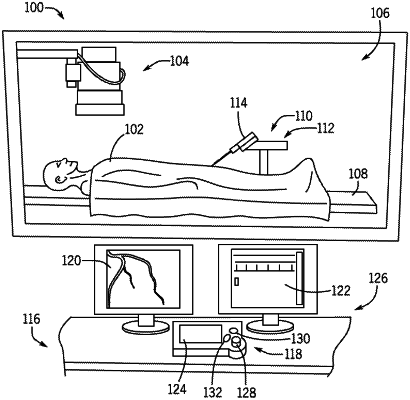| CPC A61B 90/37 (2016.02) [A61M 25/09 (2013.01); G06T 7/0012 (2013.01); G06V 10/25 (2022.01); A61M 2025/0166 (2013.01); A61M 2025/09166 (2013.01); A61M 2025/09183 (2013.01); G06T 2207/10064 (2013.01)] | 46 Claims |

|
1. A method for delivering an elongated medical device along a path to a target location using a catheter procedure system, the method comprising:
identifying a source point and at least one constraint point;
calculating the path passing through the source point, the at least one constraint point, and the target location;
generating a mask of the path;
determining whether at least one child vessel is connected to the path;
generating a child vessel mask in response to determining that the at least one child vessel is connected to the path;
displaying the mask and the child vessel mask on an image associated with the mask;
tracking a position of a distal portion of the elongated medical device based on a set of real-time images;
determining a remaining path length based at least on the position of the distal portion of the elongated medical device, the remaining path length being a distance between the distal portion of the elongated medical device and the target location, wherein the remaining path length decreases as the distal portion of the elongated medical device approaches the target location;
updating the remaining path length during movement of the elongated medical device;
determining whether the distal portion of the elongated medical device is off path;
adjusting the position of the elongated medical device in response to the distal portion of the elongated medical device being off path;
advancing the elongated medical device to the target location at a velocity; and
adjusting the velocity based on the remaining path length, the velocity being proportional to the remaining path length.
|